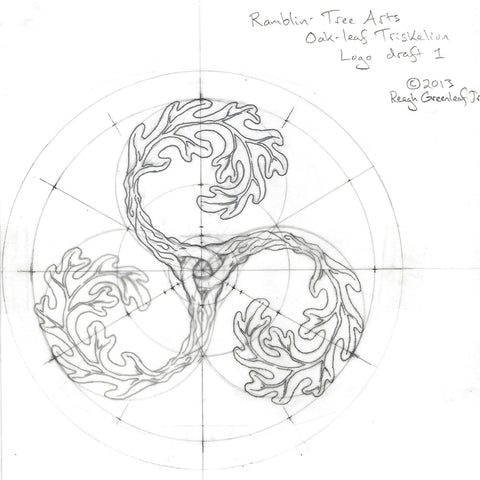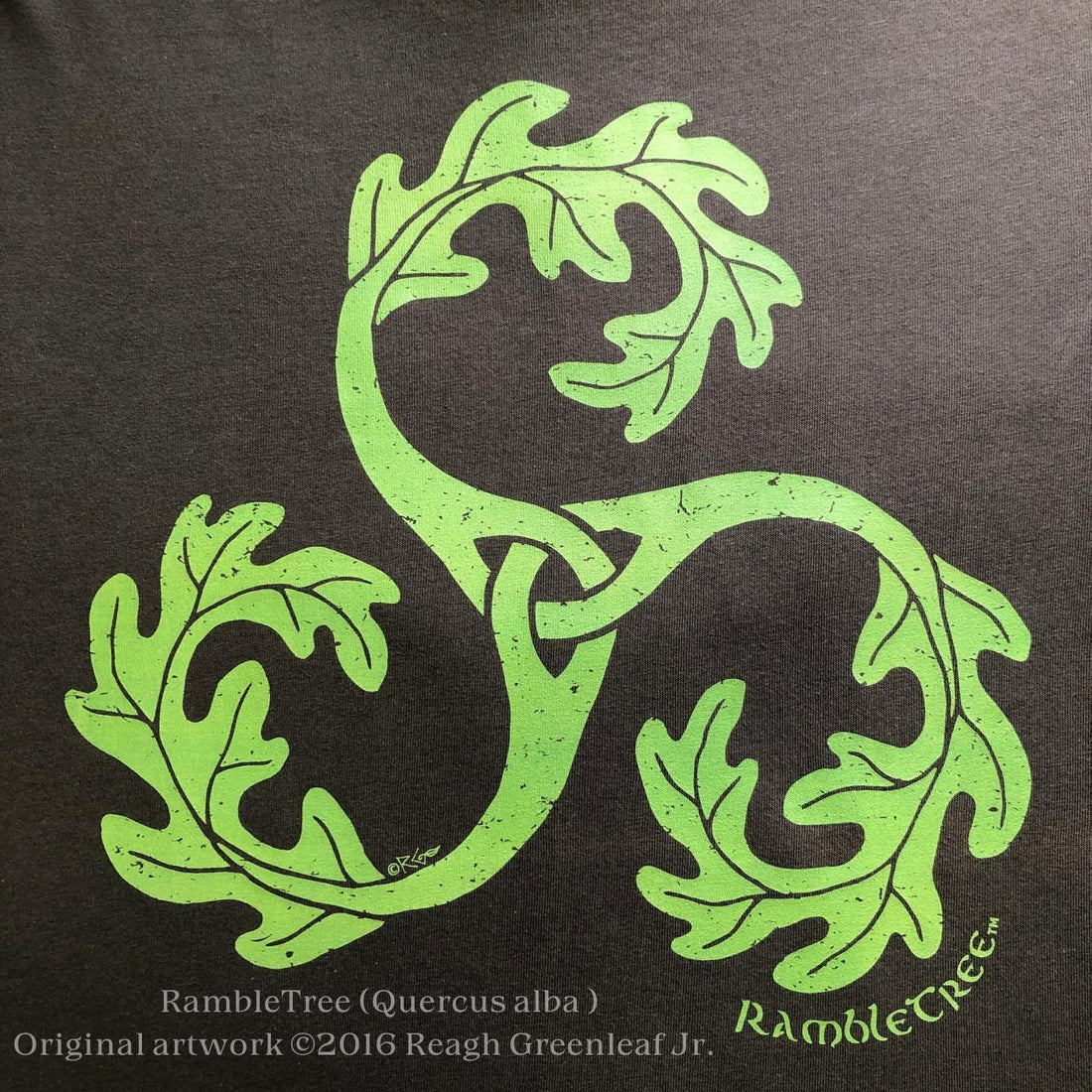Fáilte - Welcome to my first blog post!
RambleTree combines two of my favorite symbols: the Triple-spiral (triskelion) and leaves of the White Oak (Quercus alba). A triquetra (trefoil knot) connects the three spirals in the center.
The design symbolizes part of the RambleTree philosophy - Movement and Stillness Coinciding and Connection with Nature. 'Ramble' is to wander, or move about; 'Tree' is rooted in place. We can:
- Achieve movement or progress in our lives by practicing stillness (meditation, quieting our thoughts).
- Find stillness within movement (present-moment awareness, mindfulness during activity).
- Integrate our consciousness with the natural world for mutual well-being.
The Oak:
I'm very drawn to Oak trees - the shape of the leaves, the way they grow, and the feeling of magic when I stumble upon especially big, old ones. A favorite oak is in the Old Burying Point Cemetery in Salem, MA. Go there, and you'll know which one.
The oak has always been important to humans in it's natural range. The survival value of oak trees as shelter, fuel, food, fodder, medicine - and a host of other uses, such as leather tanning, wine barrels and shipbuilding - led to it's veneration by our ancestors from many places and cultures.

Celts, Druids and Brigid:
Druids, the poet-priests of pre-Christian Gaul, Britain and Ireland, are thought to derive their name from the Celtic root for oak, 'dru-' (compare 'dair' in modern Irish/Gaeilge). Historical and romanticized accounts repeatedly associate Druids with oak groves and sacred trees.
Oak is one of the many symbols of the Goddess Brigid. She was thought to be a triple-Goddess; also tying into the three-fold aspect of the RambleTree design - more on that later.
St. Brigid of Kildare, like many Irish Saints, came from Druid lineage. Kildare, (Cill Dara) means 'church of the oaks'. She is an important Saint for many Irish-American Catholics, I believe as a direct link to Irish and Celtic cultural identity. I was happy to find her alive and well here in Vermont.
Side note:
Stone for St. Bridget Church, built 1861 in West Rutland, Vermont, was hauled up the hill by Irish immigrants after working long days in the region's marble quarries. The County Down performing 'West Rutland Marble Bawn', written by James Patrick Carney, who emmigrated from Ireland to Vermont in the 1850's:
Lightning, Thunder and Sunlight!
Oak is reputed to be struck by lightning more frequently, or more dramatically, than other trees. This is the likely connection of oak trees with Thunder deities in several religions.
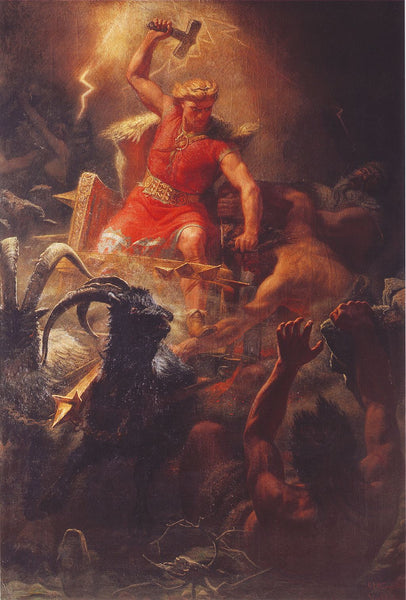
_by_M%C3%A5rten_Eskil_Winge.jpg)
_by_M%C3%A5rten_Eskil_Winge.jpg)
Oak is sacred to the Thunder deities:
- Zeus/Jupiter (Greek/Roman)
- Thor/Donar (Norse/Germanic)
- Perkūnas/Perun (Baltic/Slavic)
- Taranis (Celtic)
In many Wiccan, Neo-Pagan and Folk traditions (especially British), the Oak King and Holly King battle over the 'light and dark halves' of the year. The Oak King (Summer) defeats the Holly King (Winter) in battle on May Day - or Beltane, the beginning of Summer in Celtic calendars.
Many Thunder and Solar Deities are associated with the Wheel or Chariot, indicating action, momentum and the reciprocal nature of Life (what you do comes back to you). These qualities also tie into the circular and spiral form of the RambleTree design.
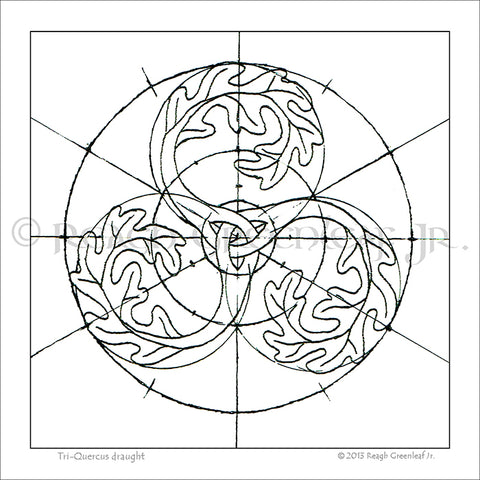
Triple-spiral:
I first became aware of the Triple-spiral or triskelion (Greek: 'three-legged') from Irish jewelry in old Museum Replicas catalogs I hoarded as a teenager. As a student of the Korean martial art, Tae Kwon Do, I noticed similarities with the Samtaeguk symbol on traditional drums (buk). From friends who studied Japanese and Okinawan styles, I also came across the mitsudomoe, or Hidari go mon.


One of the earliest examples of the triskelion, is from pre-Celtic Ireland in the Boyne river valley, present day County Meath. Brú na Bóinne, or Newgrange, is a neolithic passage tomb built approximately 5000 years ago. The design is carved into the massive entrance stone, and the wall of the passage, which is aligned with the Winter Solstice sunrise.

I had the pleasure of seeing these ancient carvings during my trip to Ireland in June, 2000 for the 1st Annual Tommy Makem International Festival of Song. The festival venues were focused in Armagh and Down, so Newgrange was not on the itinerary. However, I couldn't miss it, so I skipped out for a day and took the train from Newry to Drogheda.

The late Mr. Makem was very fond of Brugh Na Boinne, and wrote a beautiful poem by that title. You can find it in his album 'Ancient Pulsing', and book 'Tommy Makem's Secret Ireland'. When I first met him around 1998, he had a triple spiral design on the head of his banjo and custom bodhrán case.
Triskelion, and other curvilinear designs, were absorbed by subsequent cultures in Ireland, Britain and elsewhere. These were combined with interlace and zoomorphic patterns, especially during the monastic period that produced the Book of Kells, ca. 800 AD. Manuscripts and stone carvings of this period, such as 'High Crosses', are one of the main sources for 'Celtic knotwork' - and are popular today with people of Irish, Scottish and Pan-Celtic ancestry.
Insular Art (Britain and Ireland) includes influences from Nordic and Germanic art of the period, and has many parallels in the Viking world.
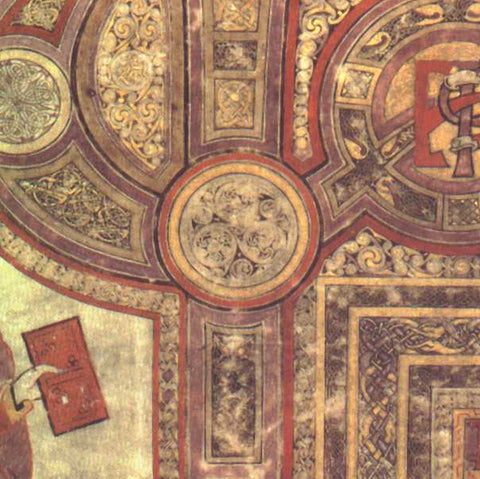
Interestingly, the Book of Kells lettering is in Iron Gall Ink. This widely-used ink was historically made with tannins extracted from the galls of . . . . you guessed it - oak trees!
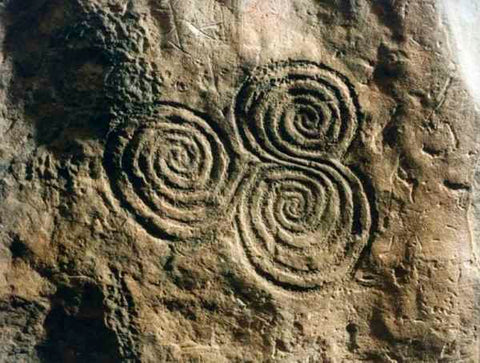
As for the Newgrange carvings, we cannot empirically know what the design meant to Neolithic people, or its function in their culture. However, it's hard to escape the idea that it is tied to the cycle of sunlight throughout the year.
Winter Solstice (standstill of the sun) marks the lowest angle, least amount of daylight, and southern extreme of the sunrise on the horizon (in the northern hemisphere). The declining daylight, height and sunrise position appears to 'stand still' for three days before changing course. This standstill (actually very slow change), which occurs at both Winter and Summer solstice, may be the inspiration for the three-fold design.
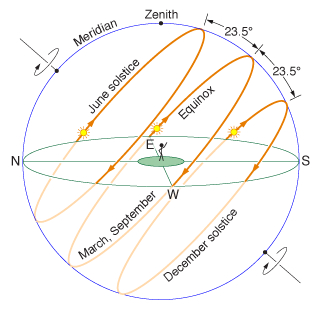
The decline to the shortest day, standstill, and return to increasing daylight can be seen as a cosmic representation of the cycle of Life, Death and Rebirth; or an individual's initiation/transformation to a new phase of conscious development. Retreating to a cave, symbolic burying, blindfolding or other forms of sensory deprivation are common to many shamanic/initiatory traditions. As above, so below.
Compare this to Christian scripture, when Jonah is in the belly of the whale for three days, and Jesus is sealed in the tomb and resurrected on the third day (albeit, near Passover instead of Winter Solstice). Do a little research, and you will find the 'three day' theme, and triune deity, throughout many traditions. This connection to astronomical phenomenon need not refute religious perspectives, but can add to their depth if taken as a whole.

The number three, and three-fold designs have also been identified with the waxing, full and waning phases of the moon. The Full and New moons often appear to last about three days. Lunar and fertility triple-Goddesses abound in mythology, and many modern Pagans honor the Maiden, Mother and Crone aspects of the Divine Feminine. Wiccan teachings include the Three-fold Law - what you do returns three-fold. This is similar to Christianity's Golden Rule (do unto others . . .) and found in practically all religions.

As I'm writing, I'm learning about even more instances of the triskelion or triskele. It appears even earlier than Newgrange at megalithic temples in Malta. The Sicilian flag bears the Trinacria with a Gorgon's head, and the Isle of Man's flag bears a three-legged heraldic device.
The exploration continues . . ..
For me, the RambleTree design reminds me of dynamism and balance, Nature's beauty and mystery, and cycles of Sun, Moon and Earth. It's a personal mandala of sorts. As with any symbol, what's important is what it means to you. What emotions are evoked? What sense do you get from it? I'd love to hear.
